Planning decision on future of Whalebones woods and fields awaited after inspector pays farm visit
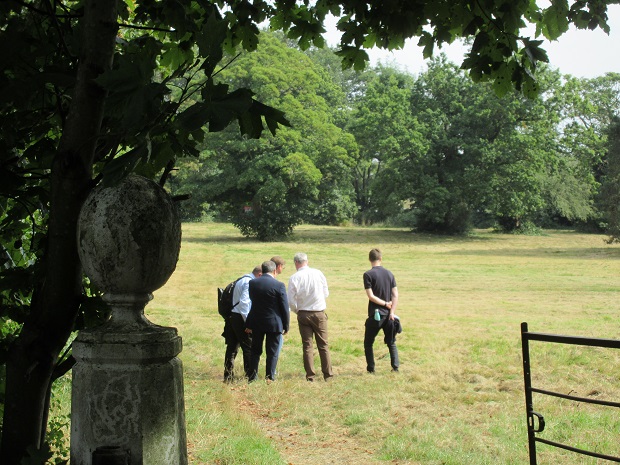
A visit by a planning inspector to the Whalebones woods and farmland rounded off a week-long public inquiry into the future of a large open space that provides a green buffer between Arkley and High Barnet.
Jonathan Price, who conducted the inquiry into the application by Hill Residential to build 152 homes, visited the Whalebones farm and fields, and then walked round the perimeter of the site which is bounded by Wood Street and Wellhouse Lane.
At the closing session of the inquiry, which was conducted online, Simon Bird, QC, representing Hill Residential, said that opposition to the scheme was misplaced and insupportable and had unnecessarily delayed new residential development.
Sharply contrasting views had been exposed during the hearing at to whether the need for new housing should take precedence over protecting woods and farmland that form part of the Wood Street Conservation Area.
After Barnet Council unexpectedly withdrew its opposition to the scheme, the Barnet Society and the Chipping Barnet MP Theresa Villiers led the case for the preservation of what she said was a precious green space with its “leafy, open nature”.
Barnet Residents Association was at odds with both the society and the local MP and gave support to the construction of a housing estate that it believed would help meet Barnet’s need for new housing and provide public access to two new areas of parkland in what hitherto had been a private estate.
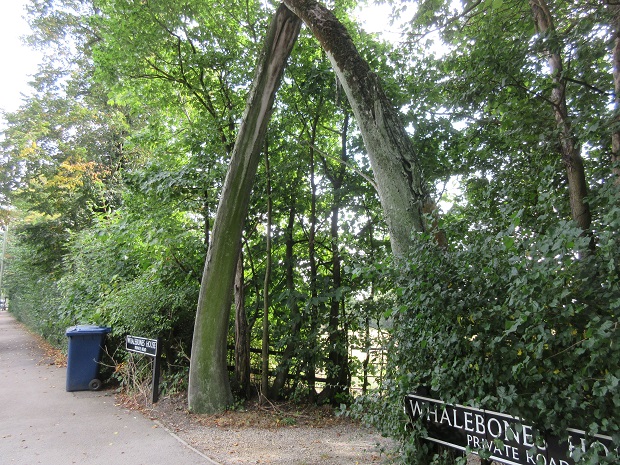
Mr Price began his inspection by walking through the historic Whalebones arch at the entrance of the drive that leads to Whalebone House (which is not included in the land to be redeveloped).
He was shown the Barnet Guild of Artists’ studio, which was built by the late Miss Gwyneth Cowing, former owner of Whalebones, and the stable block which provides space for the Barnet Beekeepers Association.
Included in the redevelopment plan is a new community building to be erected in Wellhouse Lane which will provide new premises for the artists and beekeepers.
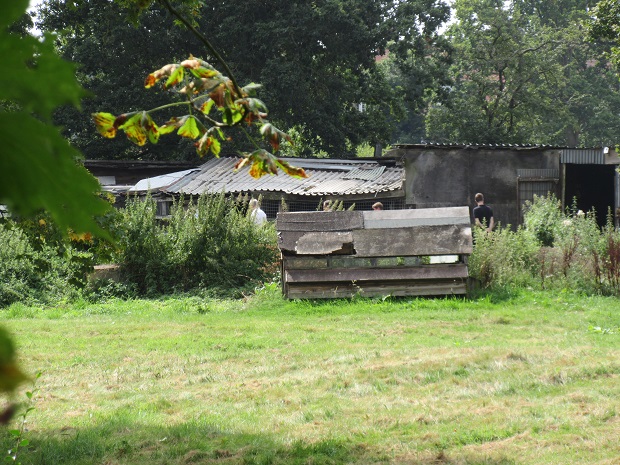
After seeing the farm where the tenant farmer, Peter Mason, and his wife Jill, keep a flock of poultry, Mr Price walked along the Wood Street boundary and then turned into Collison Avenue to see how the new Elmbank housing estate would be affected by the construction of new houses and flats in the large adjoining field.
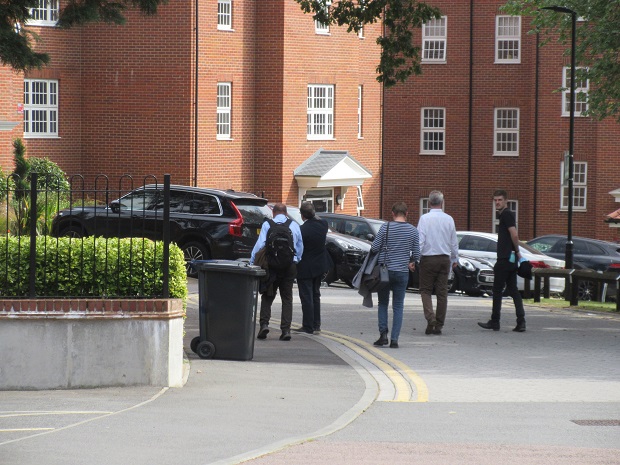
Collison Avenue residents voiced their concern at the inquiry about the presence so close to the homes of new four storey blocks of flats.
On the final day of the inquiry, Edward Grant, QC, who represented Barnet Council, and who had explained the council’s change of mind, said Hill Residential’s application was now consistent with the council’s zoning of Whalebones for residential development.
The council’s plan compared “precisely” with the developer’s application and offered more open space than been recommended in the new local plan.
In concluding his case for Hill Residential, Mr Bird said a misplaced “storm of objection” had led the planning committee to make the mistake of rejecting an “exemplar development”.
The scheme should never have been refused in the first place. Local opposition was based on the view that there would be substantial harm to the Wood Street Conservation Area, but this was insupportable.

Mr Bird (left, Mr Price top right, and Mr Grant bottom right) said the Barnet Society had not recognised the housing benefit and likewise Ms Villiers had made no mention of the fact that 61 of the new homes would be affordable.
Two new open spaces accessible to the public were included in the scheme and they would be a considerable benefit in an area deficient in public open space. In addition, there would be a new play area, a healing garden that would be close to Barnet Hospital, and a woodland walkway through the estate from Wood Street to Wellhouse Lane serving both the hospital and bus terminus.
In responding to objections from local residents about the scheme adding to heavy traffic in Wood Street, Mr Bird said vehicles from the new estate could be accommodated without unacceptable pressure on road safety; the fact there was congestion at peak times was not a reason for objection.
Finally, Mr Bird said he had to clear up misconceptions about the wishes of the late Miss Cowing whose trustees had made the application with Hill Residential.
There was no requirement in her will that the land should be used for agricultural use, only that it should be so used so long as it was “practicable”. Such use was no longer practicable because it could no longer be justified because of the cost of maintaining the site. Any new agricultural enterprise would be unviable.
He believed that had Miss Cowing been alive it was “likely” she would have approved Hill Residential’s plan. Agricultural space was being retained for the tenant farmer; new premises would be provided for the artists and beekeepers; there were two new area of parkland and a healing garden, which accorded with the public benevolence shown by Miss Cowing, and he thought the criticism that the scheme did not meet her legacy should cease.
In his closing remarks, Mr Price gave no indication of the timing of his decision. He would be receiving further documents in mid-September. He was also in the process of writing up other planning inquiry reports so the inspector’s conclusions are awaited.
1 thought on “Planning decision on future of Whalebones woods and fields awaited after inspector pays farm visit”
Comments are closed.

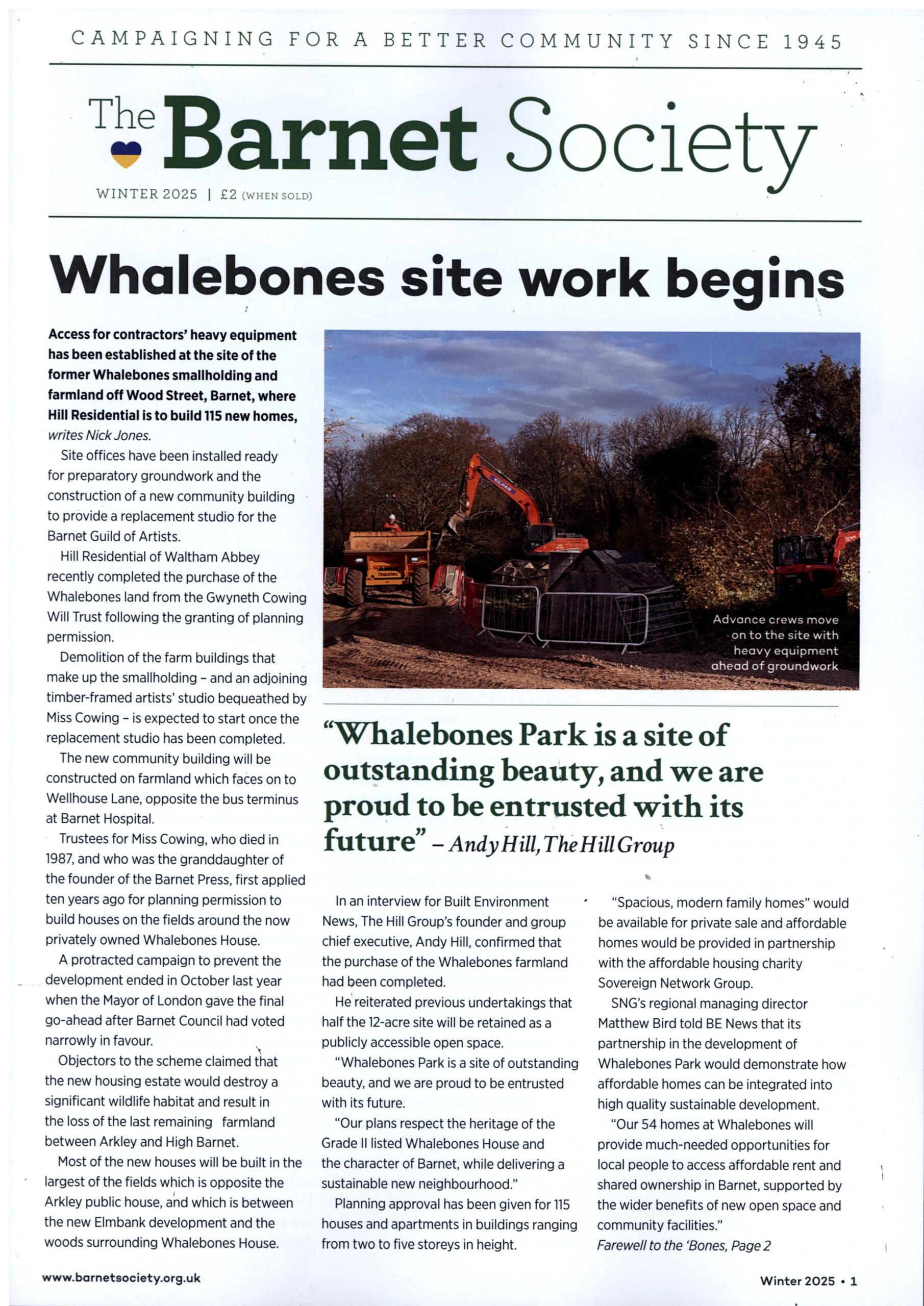
[i]”He believed that had Miss Cowing been alive it was “likely” she would have approved Hill Residential’s plan”[/i] … Wow, Mr Bird is taking the mickey of everyone….